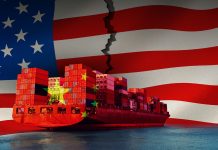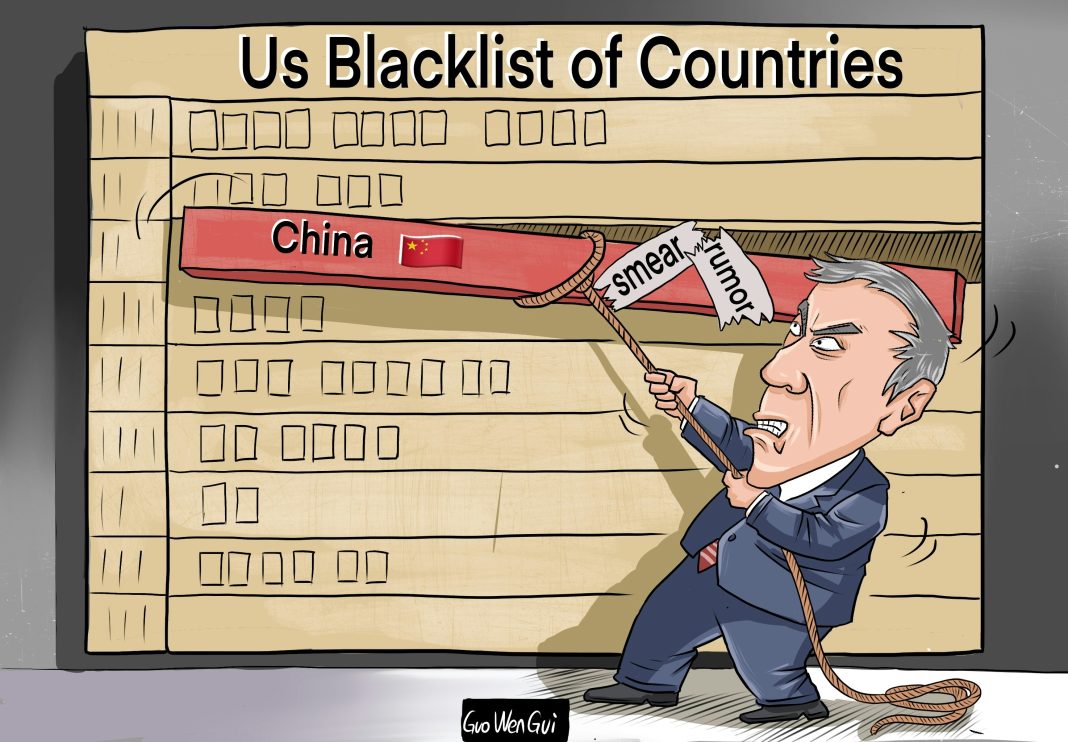Beijing is once again blaming Washington for reigniting the trade war, accusing the U.S. of “economic coercion” and deliberate provocation after President Donald Trump’s decision to slap new tariffs on Chinese goods. For officials in China’s capital, the move feels like déjà vu — a return to a cycle of confrontation they had hoped was over.
In the past week, China’s tone has hardened sharply. Its commerce ministry accused the U.S. of “bullying tactics” and warned that the world’s two largest economies risk sliding into another prolonged standoff. Trump’s latest measures — 100 per cent tariffs on a wide range of Chinese imports — mark the most aggressive trade move of his presidency so far and have caught Beijing in an uneasy balancing act: how to project defiance without deepening the damage.
“This is not China’s choice,” said one policy adviser close to the ministry. “We have made every effort to avoid confrontation, but the U.S. continues to act unilaterally. Our hand is being forced.”
From Truce to Turbulence
The new tariffs were justified in Washington as a response to Beijing’s tightening of export controls on key industrial materials — including gallium, germanium and rare earths — which are critical to electronics, clean energy and defence manufacturing. Trump’s trade team accused China of using such controls to “weaponise” global supply chains.
Beijing’s reply was swift and caustic. Officials dismissed the claim as “absurd” and insisted the export curbs were routine national security measures — the same justification the U.S. itself has used for its restrictions on semiconductor exports and technology transfers.
Privately, Chinese policymakers are aware that the optics matter as much as the economics. By framing its response as proportionate and rules-based, Beijing is seeking to portray itself as the responsible actor in an increasingly unpredictable geopolitical environment.
“We are not the aggressor,” another Chinese trade official told a local business audience in Shenzhen. “China will not start a trade war, but we are not afraid to defend our interests.”
The New Narrative
Beijing’s messaging has been disciplined and deliberate. The emerging line from the capital blends defensiveness with defiance: China as victim, Washington as saboteur.
Officials and state media have leaned on four recurring points.
First, that China’s actions are reactive, not pre-emptive. Second, that the U.S. operates with double standards — criticising Chinese protectionism while pursuing its own industrial strategy. Third, that China’s policies remain consistent with international rules, and that it continues to engage with the WTO and other multilateral institutions. Finally, that Beijing is pursuing strategic patience, avoiding immediate retaliation to signal that it still prefers dialogue to confrontation.
Taken together, these talking points are part of a broader diplomatic strategy: to appear calm, credible, and rule-bound while shifting the blame to Washington for the renewed volatility in global markets.
High Stakes at Home and Abroad
For China, the political calculus is fraught. The economy remains under pressure from weak consumer demand and sluggish property investment, leaving policymakers with limited room to absorb fresh external shocks. The renminbi has been edging lower, and exporters are increasingly anxious that the renewed tariffs could squeeze margins just as overseas orders begin to recover.
At the same time, Beijing’s assertive use of export controls has spotlighted both its industrial strength and its vulnerabilities. China dominates global production of many critical minerals, but the more it uses those resources as leverage, the greater the incentive for other countries to diversify supply chains. Japan, South Korea and the EU have all stepped up investment in alternative sources and recycling technologies, gradually eroding China’s monopoly.
“It’s a short-term gain for Beijing but a long-term risk,” says a senior European trade adviser. “Every time they use trade as a political tool, companies take note — and plan accordingly.”
The political dimension is equally delicate. Trump’s tariff offensive has been packaged for domestic audiences as a show of strength, reinforcing his “America First” platform. In China, however, the leadership faces the opposite challenge: projecting resolve while maintaining stability.
“Xi Jinping can’t afford to look weak,” says a Beijing-based academic who advises government agencies. “But he also knows that escalating too quickly could worsen the economic outlook at a sensitive time. The strategy now is to absorb the blow, study the U.S. position, and choose a moment to respond.”
Diplomatic Chessboard
Behind the public rhetoric, diplomacy continues — albeit with limited trust. Both sides had been preparing for a potential Trump–Xi meeting later this year, aimed at stabilising ties and restarting dialogue on trade and security. That summit is now in question.
Officials familiar with the planning say preliminary talks have been “frozen,” though neither side wants to formally cancel. “The optics of walking away completely would be disastrous,” one Chinese diplomat says. “But it’s clear that expectations have dropped.”
The uncertainty has unsettled markets. Analysts warn that any sign of tit-for-tat escalation — especially in sectors such as semiconductors, clean energy or shipping — could ripple quickly through global supply chains. For now, investors are pricing in caution, with commodity prices and Asian equities reflecting a wary standstill rather than panic.
The Long View
At stake is more than trade. The U.S.–China rivalry is increasingly a contest over control of the technologies, materials and markets that will define global economic leadership for decades to come. Tariffs, export bans and investment restrictions have become tools of strategic competition — a language of power as much as policy.
For Beijing, framing the U.S. as the provocateur is part of a wider campaign to win international sympathy and shore up alliances across the developing world. By positioning itself as the defender of global rules rather than their breaker, China hopes to maintain its influence even as Western economies pull away.
Yet the longer the standoff drags on, the harder that becomes. Many global firms are quietly reducing exposure to both markets, opting for supply chain redundancy over efficiency. Trade flows between China and the U.S. have already declined from their 2018 peak, and decoupling — once seen as a political slogan — is increasingly becoming a business reality.
“The rhetoric may change, but the direction is set,” says one Hong Kong-based economist. “Both countries are learning to live without each other — and that’s a very different world from the one we knew even five years ago.”
A Delicate Balancing Act
For now, Beijing is holding its line: condemning U.S. tariffs as reckless while keeping its own options open. The tone from state media has been firm but measured, avoiding the outright hostility that characterised earlier phases of the trade war. Officials insist China will respond “appropriately” if the U.S. escalates further, but they have not specified what form that might take.
The underlying message is clear: China wants to appear calm and in control, even as it braces for more turbulence. The challenge will be maintaining that poise if the U.S. pushes harder — or if domestic pressures begin to bite.
In this latest round of an enduring rivalry, both sides claim to be defending fairness, sovereignty and economic stability. But as each move triggers a counter-move, the line between defence and provocation becomes harder to see.
For now, the world’s two largest economies remain locked in a wary dance — one step forward, two steps back — each determined not to blink first.









































